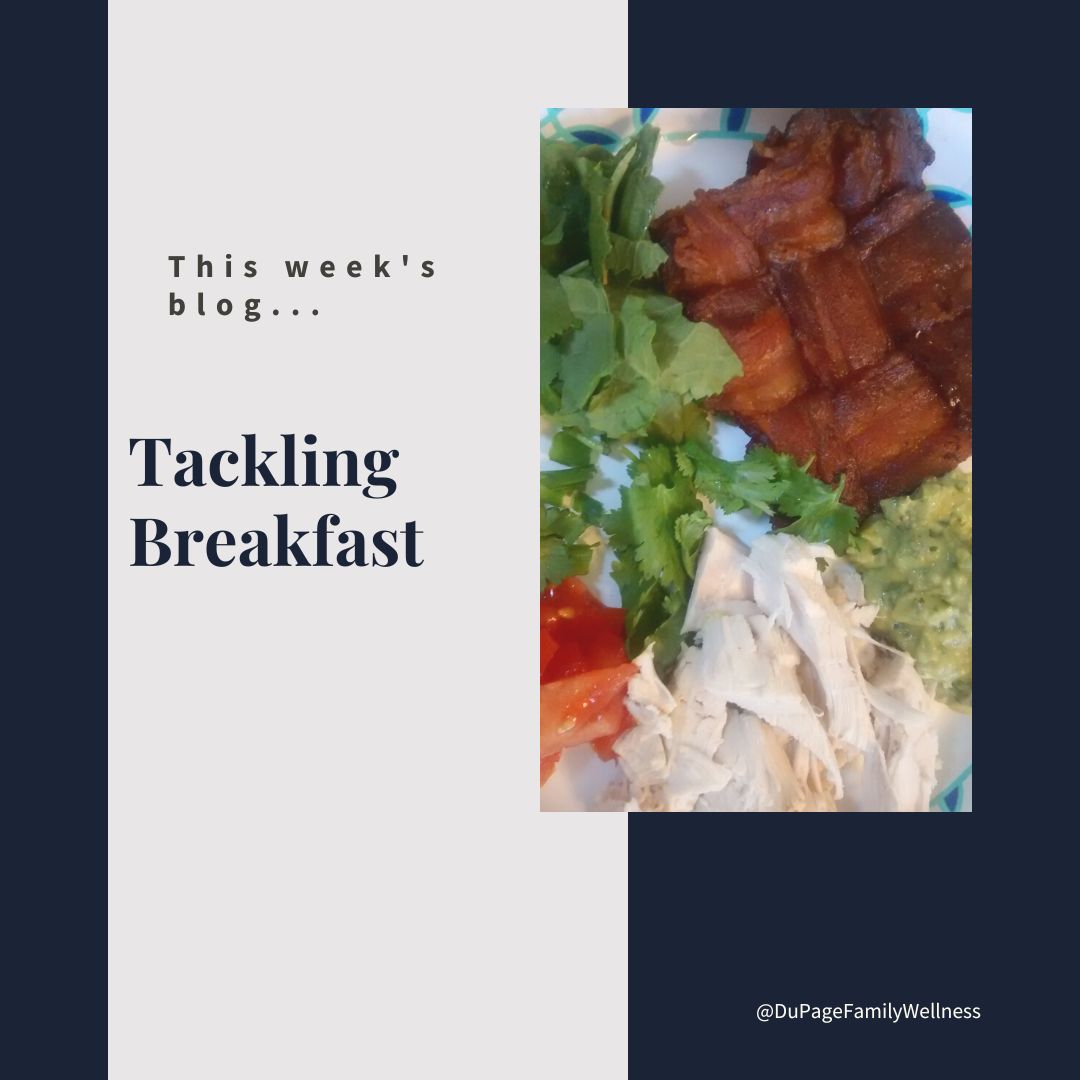 One of the most stressful things of a new school year can be getting meals together, especially packing lunches. If you find yourself wanting to give your kids something substantial but are struggling, this article is for you.
One of the most stressful things of a new school year can be getting meals together, especially packing lunches. If you find yourself wanting to give your kids something substantial but are struggling, this article is for you.
While the idea of providing your child a Pinterest-worthy lunch is fun, most of us just need to come up with something to get out the door. The good news is that you don’t have to make it pretty to make it nutritious.
Let’s look at ways to minimize the stress of packing a nutritious lunch.
Avoiding the After School Hangry
Quality fats and proteins will help your child maintain their energy and focus all day. Typical lunch foods are often highly processed (i.e. bread, crackers, chips, cookies, pop, juice boxes, candy, etc.).
Convenience foods may be easy to grab, but the high sugar and carbohydrate levels cause a blood sugar spike. This will result in a sudden blood sugar crash that will leave them feeling rotten.
On the other hand, a lunch with more fat and protein keeps blood sugar even. Your student will be satisfied and engaged all afternoon. You can also pack nutrient-dense snacks if your child doesn’t eat well at lunch or is struggling to get enough calories.
Take a look at some suggestions below.
Entrees
Sides
My Kid's Personal Favorites
- PaleoValley Beef Sticks (Maddie loves teriyaki, Piper digs the summer sausage and Harper is all about the original)
- Cherry Tomatoes from our garden preferably
- Cutie Oranges
- Hard Boiled Eggs
- Dried Mango or apricot
- Trail Mix (bonus if there are a few chocolate chips mixed in)
- Lara Bars
Read more ...
 It can be a lot of fun to buy a new backpack each year. Little kids love to find ones with their favorite characters on them, while older kids may be trying to express themselves through the style. Either way, kids tend to focus on how it looks.
It can be a lot of fun to buy a new backpack each year. Little kids love to find ones with their favorite characters on them, while older kids may be trying to express themselves through the style. Either way, kids tend to focus on how it looks.
Many parents make sure there are enough pockets and a water bottle holder, but never think about how their child is wearing the backpack. A backpack is worn each day, so it is important to show your child some tips to make it comfortable and functional.
In addition to making the backpack more comfortable, it can protect your child’s back and prevent injury. Let’s look at some tips to start the year off right.
Straps
When your kids wear their backpacks, make sure the straps are snug. If the straps are too loose, the backpack will hang low. This causes an arch in the lower back that creates an unnatural forward posture putting a heavier load on the neck and shoulders.
Encourage your kids to use both straps. Using one strap can create an imbalance, especially if they use the same shoulder each day. As the weight of the backpack pulls on one shoulder, the body shifts to compensate. This leads to some muscle groups becoming weaker and others becoming tighter. Our posture should not be strongly affected by wearing a backpack. When the straps are tight and both straps are used, posture will be less affected.
Weight
Be sure not to overload the backpack. The weight of a full backpack should be less than 10-15% of the body weight of the person carrying it. So, don’t let them bring extra stuff that will weigh them down.
Have them put the heaviest items closest to their body with the straps tight. This makes the center of gravity closer to their back causing the backpack to feel lighter.
Features
It helps to buy a backpack that is lightweight and padded. Canvas is lighter than leather and won't weigh them down. Padding on the straps and in the lower back can redistribute the weight taking pressure off the neck and shoulders.
Using the chest buckle or waist strap also distributes the weight providing more support. This may not be necessary when classes are close together but can be useful when walking longer distances within the school or in transit to school.
Discomfort
Wearing a backpack should not cause discomfort. Try making these simple modifications if your child’s back, neck, or shoulder begins to hurt. If that doesn’t resolve the issue, give us a call.
Pain, especially in kids, is not a normal “back-to-school symptom” and should be taken care of as quickly as possible. The great thing about kids is that their bodies typically respond to treatment quickly.
Remember, these rules apply to adults as well! Keep them in mind whether you are traveling somewhere with your gear or carrying your laptop to the coffee shop.
Dr. Jamie
P.S. Another tip for the beginning of school is to shop for supplies early or online. Target's School List Assist makes online shopping simple. Just follow the link, put your zip code in the yellow box, and choose your child's school/grade. A list of needed supplies will pop up, and you can select the items you want from the list.
 Who do you turn to when life gets difficult? Think about the qualities that make you choose them in your time of need. Perhaps you don’t have that kind of friend. What would you need to see in a friend to be able to trust them in that manner?
Who do you turn to when life gets difficult? Think about the qualities that make you choose them in your time of need. Perhaps you don’t have that kind of friend. What would you need to see in a friend to be able to trust them in that manner?
The best thing about these friends is often your ability to be yourself without having to hide your failures or disappointment. They accept your experience as valid without judgment, showing kindness in every situation. In other words, they are compassionate.
So, let me ask you, are you that kind of friend to yourself? That’s right, most of us are more kind to others than we are to ourselves. We are patient and accepting of their struggles and failures while we beat ourselves up over ours.
Showing yourself the same level of care that you would show a good friend is called self-compassion. Let’s look at how that can make a difference in your life and find some practical ways to develop self-compassion.
What is Self-Compassion?
Author and associate professor, Kristen Neff, Ph.D. is recognized as one of the world’s most influential research psychologists. She explains that “having compassion for oneself is really no different than having compassion for others.”
Compassion literally means to “suffer with.” When we are compassionate we enter into someone’s suffering for a time. We don’t try to explain away the suffering, blame them for their suffering, or minimize it. We just let it be what it is, knowing that our compassion toward them will make a difference in their experience.
How Do You Treat Yourself?
Oftentimes, when we suffer we are not very kind to ourselves. We may try to push the feelings away, blame ourselves, or think our feelings are silly. Our experience is not one of acceptance and care.
Neff says that “self-compassion entails being warm and understanding toward ourselves when we suffer, fail, or feel inadequate, rather than ignoring our pain or flagellating ourselves with self-criticism.”
It involves treating yourself like a dear friend. How would you react to a friend in your situation? Would you berate them and tell them they were silly? Would you tell them to just get over it because it’s no big deal?
No, a good friend wouldn’t do any of those things, so don’t do it to yourself!
Components of Self-compassion
When we have self-compassion we give ourselves the care we would give to others. It involves…
Read more ...
 Many of us grew up on sugar cereal, mac-n-cheese, fish sticks, and chicken nuggets. They were our favorite foods, but have you ever looked at the ingredient lists? If not, take a look, you may be surprised.
Many of us grew up on sugar cereal, mac-n-cheese, fish sticks, and chicken nuggets. They were our favorite foods, but have you ever looked at the ingredient lists? If not, take a look, you may be surprised.
Now that I know what goes into these foods, I question whether we can even call them food. They are more of a food-like substance made up largely of fillers and preservatives. So, are you eating food or a food-like substance?
When you focus on putting good nutrient-dense real food into your body, you will begin to feel the difference. You might be surprised that things you didn’t even realize were bothering you begin to change.
Let’s talk about REAL FOOD today, so you can feel great and make the best choices for your body.
What is Real Food?
Anything that is made in nature instead of a lab, things your great-grandparents would recognize as food, would be considered real foods. Quality meats, healthy fats, vegetables, nuts, and fruit are the foundation of all real food items.
If you can’t find it in nature, get it from a farmer, or grow it yourself, it probably isn’t real food. Even if you can find the original product in one of these places, there may be fillers or preservatives added in processing. It’s important to read the label to see if each ingredient on the list qualifies as real food.
What are the Benefits of Real Food
- decrease inflammation
- stabilize blood sugar
- regulate menstrual cycles
- clear skin (less acne)
- move toward your ideal weight
- increase and sustain energy (when focused on quality protein and fat)
- feeling satisfied longer
- gut healing (fewer digestive issues)
- increase positive feelings (less anxiety and depression)
How to Buy Real Food
Most real food items will be found on the perimeter of the grocery store. The packaged items in the middle of the store are generally highly processed and often contain a long list of ingredients.
When you want to buy real food, it is helpful to look for foods with just a few ingredients. For example, a popular brand of fruit snack lists over twenty ingredients on the package while strawberries only have one.
Read more ...
 Setting your kid’s school day off with a solid breakfast will help them stay focused and prevent them from becoming hungry mid-morning. It doesn’t have to be anything fancy, in fact, simple can actually be better.
Setting your kid’s school day off with a solid breakfast will help them stay focused and prevent them from becoming hungry mid-morning. It doesn’t have to be anything fancy, in fact, simple can actually be better. 

 One of the most stressful things of a new school year can be getting meals together, especially packing lunches. If you find yourself wanting to give your kids something substantial but are struggling, this article is for you.
One of the most stressful things of a new school year can be getting meals together, especially packing lunches. If you find yourself wanting to give your kids something substantial but are struggling, this article is for you.  It can be a lot of fun to buy a new backpack each year. Little kids love to find ones with their favorite characters on them, while older kids may be trying to express themselves through the style. Either way, kids tend to focus on how it looks.
It can be a lot of fun to buy a new backpack each year. Little kids love to find ones with their favorite characters on them, while older kids may be trying to express themselves through the style. Either way, kids tend to focus on how it looks.  Who do you turn to when life gets difficult? Think about the qualities that make you choose them in your time of need. Perhaps you don’t have that kind of friend. What would you need to see in a friend to be able to trust them in that manner?
Who do you turn to when life gets difficult? Think about the qualities that make you choose them in your time of need. Perhaps you don’t have that kind of friend. What would you need to see in a friend to be able to trust them in that manner? Many of us grew up on sugar cereal, mac-n-cheese, fish sticks, and chicken nuggets. They were our favorite foods, but have you ever looked at the ingredient lists? If not, take a look, you may be surprised.
Many of us grew up on sugar cereal, mac-n-cheese, fish sticks, and chicken nuggets. They were our favorite foods, but have you ever looked at the ingredient lists? If not, take a look, you may be surprised. 